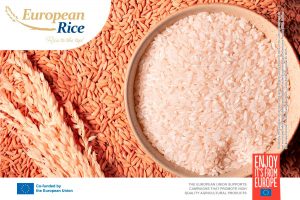 Did you know, rice is grown in Europe?
Did you know, rice is grown in Europe?
A store-cupboard staple and beloved ingredient, even ardent foodies will be surprised to learn that rice is grown on an incredible 416,000 hectares across Europe, producing around 2.6 million tonnes a year, with 10% of this coming from Greece.
Distinguished for its unique stickiness, aroma, texture and flavour, there are two main varieties of European rice, including Indica, a long-grain variety producing fluffy, separate rice once cooked and Japonica, a shorter, medium grain, that creates a glutinous texture once cooked, making it perfect for recipes such as pilafs, risotto or paella.
Both types are incredibly versatile and make up the base of not just traditional Greek dishes like the indulgent Rizogalo (a Greek rice pudding) and holiday favourite Greek Dolmades (vine leaves stuffed with herbed rice) but also family-friendly staples such as fried rice, stuffed peppers, one-pots and biriyanis. European rice is a fantastic choice for those looking to make smart food choices, as it is rich in carbohydrates, proteins, vitamins, and minerals and is also allergen-friendly and gluten-free.
Many will be surprised to learn that European rice is a sustainable choice – one of the major areas for rice harvesting is within the deltas of 3 Rivers – Axios, Aliakmon and Loudias – near Thessaloniki, where you’ll find roughly 10,000 hectares of rice fields. Here, rice cultivation expands freshwater habitats in the region and encourages local fauna and flora to flourish.
From the deltas of the Rivers Axios, Loudias and Aliakmon to your kitchen, welcome European rice into your cooking and feast on the knowledge that you’re making a healthy, sustainable and delicious choice!
– https://www.europeanrice.eu/
– There are two main European Rice varieties including Japonica and Indica
– European Rice producers fully comply with the Integrated Quality Management System for the Agricultural Production of Rice.
It is funded by the European Union. Views and opinions expressed are however those of the author(s) only and do not necessarily reflect those of the European Union or the European Research Executive Agency (REA). Neither the European Union nor the granting authority can be held responsible for them.
For more information visit https://www.europeanrice.eu/



